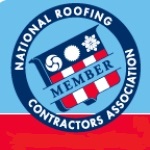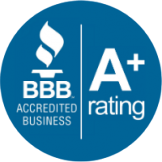Long Island Roofing: Article About Roof Maintenance
Tiny bubbles that form in roofing material when it has moisture trapped underneath or inside. As the moisture heats from the sun, a bubble will form on the surface. They do not pose an immediate problem, but over time can lead to deterioration or a leak.
Long Island roofing contractors answer a question: How can I keep blisters from becoming a major problem before I can have the shingles replaced?Limit the amount of traffic allowed to walk on the roof and avoid contact with blistering areas. Do not disturb the shingles and make the problem worse. If surrounding trees allow heavy limbs to hang over and risk falling, consider trimming them back. Always check for fallen debris following thunderstorms or heavy wind conditions.

When the weather begins to warm up for the summer, you should take the opportunity to take care of your residential Long Island roofing repair and cleaning. Keeping things clean and maintained prevents major problems, such as soft spots or leaking. Pick a dry afternoon to perform a thorough inspection of the status of your roof.
Cleaning is a common sense task that does not require much guidance other than safety. Never climb onto a roof alone, and ensure the ladder is sturdy before climbing up. Remove all debris, even small twigs that can cause buildup and hold onto water. If you are cleaning the gutters, be sure to keep a cup handy to collect asphalt granules that can be useful in the repair phase. Completely sweep leaves off and check for growing organisms, such as moss or mildew. These can compromise the integrity of adhesive and sealing that keep the home safe from water leaks. Always have a professional take care of any removal if it requires chemical cleaning.
Once the roof is completely clean, work from one side to the other taking note of damaged shingles to fix. Curling of the corners can be repaired if it is caught early enough. A tube of roofing sealant and a basic household brick can complete this simple task efficiently without the need to call in a roofer. Apply a dab of sealant under the curling piece and leave a brick on top of it for at least one full day to allow drying time.
A roofing professional from Long Island Roofing can answer any question you have about shingle roofs or architectural roofing.
This is all that is necessary as long as curling is isolated to a corner.
To repair tears or cracks, use the same tube of sealant used to repair curling. Run a line underneath and on top of the crack, and use a putty knife to spread it out evenly. Take the cup of loose asphalt granules collected during cleaning to hide the evidence of sealant. This can hold up for years and prevent having to completely replace roofing materials over a few rips and tears.
If you notice blistering, unfortunately the best thing to do may be to avoid contact until the shingles can be replaced. Most of the time a single shingle is covered in these fragile air pockets, rather than just having one or two. Once they are popped, the hole can allow water to seep inside. Replacing asphalt shingles is a simple procedure that most homeowners are comfortable completing themselves when repair is not suitable. They are connected with a sealer strip and 4 roofing nails. Begin with the shingle above the one being replaced by running a pry bar through the strip. This reveals the first row of nails that can also be removed with guidance from the pry bar. Slide it under the damaged shingle, and the nails should force themselves out enough to remove. Unfortunately, the nails from the shingle above also run through the one being replaced, so they must also be removed before pulling it out. A total of eight nails must be removed in the process of replacing one piece. Once it is dislodged, slide the new shingle into place and use a hammer to secure it into place.









